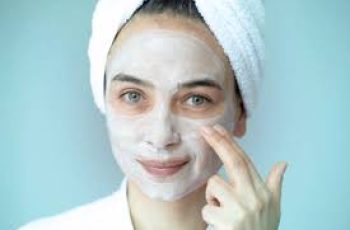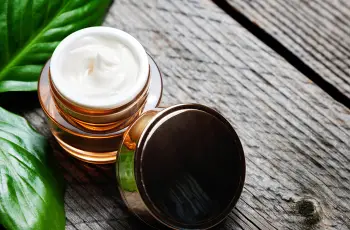
Can You Use Retin A and Hyaluronic Acid Together?
Retinol and hyaluronic acid are undoubtably two of the most impressive skincare ingredients that deliver results and are backed with a lot of scientific research. It’s no wonder that so many of us would want to combine these powerhouse ingredients together, but the question is- Can you use retin A and hyaluronic acid together? That is exactly what we will be finding out more about in today’s blog post, but before we get stuck in, here is a brief recap on what hyaluronic acid and retin A do for the skin and the results you can expect to see.
What is Hyaluronic Acid?
Hyaluronic acid is naturally occurring in the body and is responsible for keeping your skin, joints and tissue hydrated and maintain their healthiest state.
When it comes to skincare formulations, the form of HA is derived from sugar cane and is blended into an array of products that give the skin a hydrated, plumped, and glowing looking complexion.
The way it works is by drawing moisture from the area surrounding the face and found in other skincare formulas and locking it into the skin. This ensures the protective skin barrier is strengthened and able to ward off any exposure to free radicals, such as pollution and UV rays that result in skin damage and other concerns.
You’ll find that hyaluronic acid can be used by all skin types, even those with dry skin that is prone to sensitivity. It is also one of the few ingredients that can be teamed with almost all other skincare ingredients, with the hydrating benefit it has for the skin it can counteract any irritation caused by more potent ingredients.
Find out more about hyaluronic acid over on our dedicated blog post about HA and its skincare benefits.
What is Retin A?
Retin-A also known as tretinoin is a potent form of vitamin A that is favoured by many to use to help combat signs of ageing as well as treat acne simultaneously.
Often mistaken as an exfoliant, Retin-A can increase the speed of the skin cell natural turnover cycle. This helps to rid the skin of any build-up of dead skin cells and reveals fresh, new skin underneath, leaving you with a glowing, vibrant complexion.
Signs of ageing, such as fine lines and wrinkles are combated whilst the loss of skin firmness is also combated with the help of Retin-A as it works in the lower layers of the skin and gives the collagen production a boost resulting in a firmer, younger face.
If you are wanting to know more about Retin-A and how it benefits the skin, there’s a dedicated blog post about it over on The Beauty Insiders.
Can you use retinol cream and hyaluronic acid together?
Yes, you absolutely can use hyaluronic acid and retinol cream together. Quite often you’ll find there are a variety of skincare products that come with both ingredients blended in a formula. This is considered the easiest way to incorporate both powerhouse ingredients and reap the rewards the quickest way possible. Having said that there is nothing stopping you from using hyaluronic acid and retinol separately, starting with retinol allowing it to absorb into the skin before applying hyaluronic acid as this will lock moisture into the surface and counteract the common drying side effects that occur when using any form of vitamin A in your daily routine.
What goes on first hyaluronic acid or Retin A?
This is very much dependant on the type of product each ingredient is formulated into. The basic skin rule is to apply your skincare products in the order of consistency, starting with the thinnest to thickest.
You’ll often find that hyaluronic acid is found in serums and moisturisers which are applied to the face during the later stages of your skincare routine. Retin-A for example, are often found in moisturisers and face creams. Once you have established which product would be applied first you will find that teaming both ingredients together will result in a brighter, glowing complexion with minimal skin irritation or side effects.
I would still suggest its best you perform a patch test for 24 hours before applying any ingredients or formulas to the face, this is the best way of avoiding unwanted irritation.
What is the difference between hyaluronic acid and Retin A?
Although they are as potent as each other, hyaluronic acid, and Retin-A work very differently on the skin. The easiest way to remember the difference is to think of hyaluronic acid as a large glass of water for the skin. The humectant traits found in the acid results in water being continuously drawn into the skin and locked into the surface. This is where you will find the protective skin barrier which when weakened can result in the skin becoming exposed to skin damage, such as hyperpigmentation from the sun, fine lines, and wrinkles from pollution and well as many other environmental aggressors causing long-term damage to the skin.
Can hyaluronic acid make wrinkles worse?
Not really, but you can have too much of a good thing, by this I mean applying a liberal amount of hyaluronic acid will cause water to be drawn up from the lower layers of the skin. This will have an all-over drying effect on the skin and over time will make fine lines and wrinkles appear more visible, often looking deeper than they are.
To counteract this, I would suggest stop using hyaluronic acid for a couple of day to allow the skin to rebalance. You should then reintroduce the acid and apply the correct amount onto the face which will help keep the skin hydrated, plumped, and healthy.
There you have a little more information about whether you can use Retin-A and hyaluronic acid together. Don’t forget if you had any more skincare questions, come and follow us on Instagram, you’ll find me over in the direct messages, looking forward to seeing you there!


